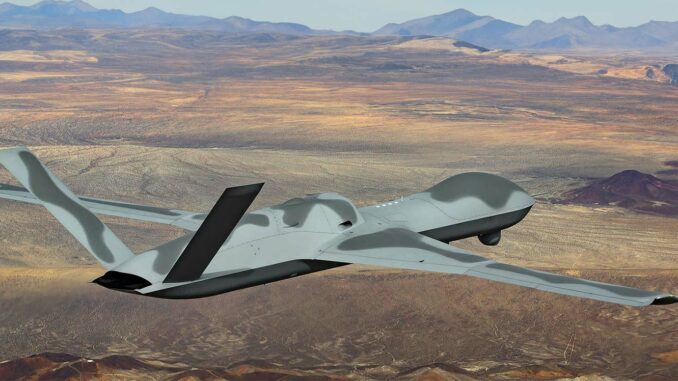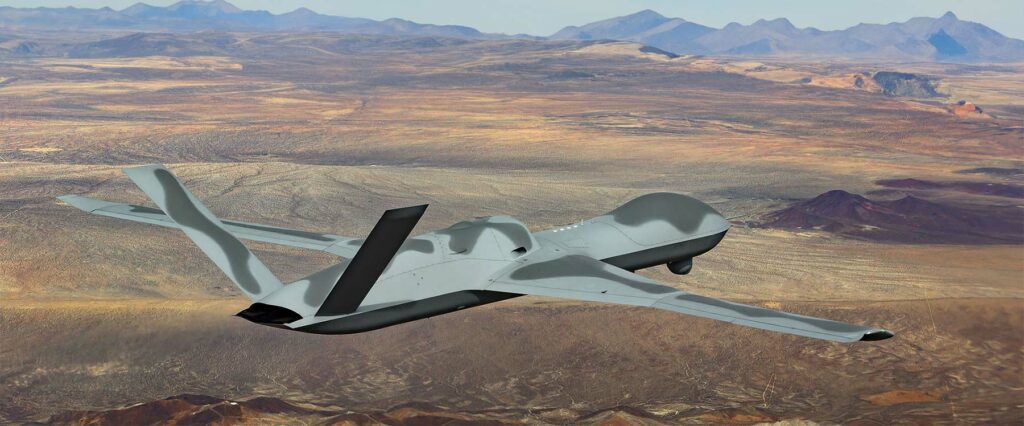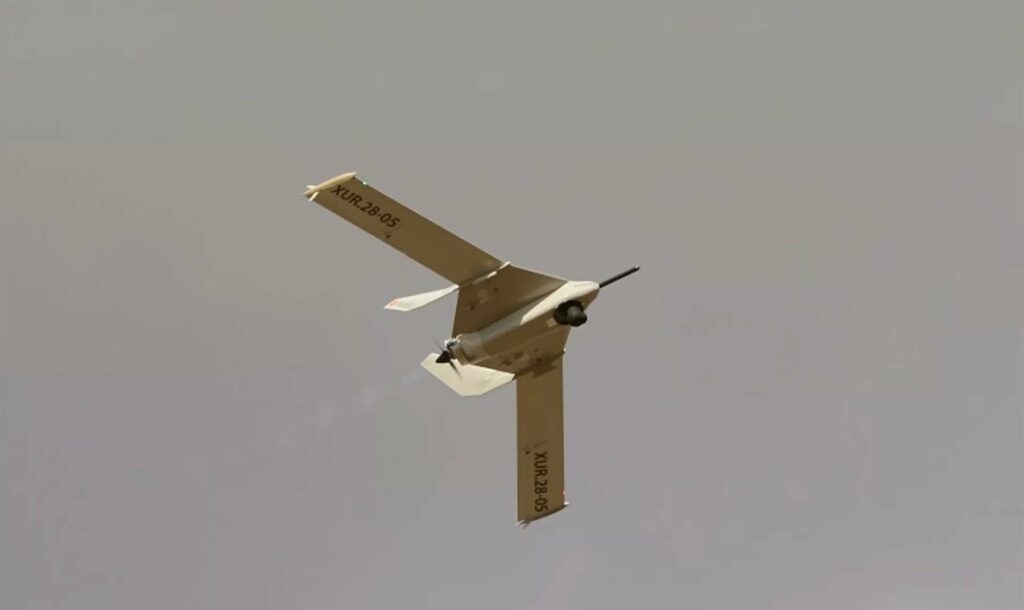
Explore the different types of drones: multi-rotor, fixed-wing, UCAV and more, their uses, performance and technologies.
Military drones, also known as Unmanned Aerial Vehicles (UAS) or Unmanned Combat Aerial Vehicles (UCAV), are an increasingly crucial component of modern armed forces. They offer a multitude of applications, making military operations safer, more efficient and more tactical.

UAV missions
Surveillance and reconnaissance
One of the most common uses for military drones is surveillance and reconnaissance. Equipped with high-definition cameras, thermal sensors and other surveillance technologies, drones can fly over areas of interest and transmit images and data in real time to commands. This enables greater situational awareness without endangering troops on the ground. Long-endurance drones can stay aloft for long periods, providing continuous surveillance crucial for border surveillance, terrain reconnaissance, and tracking enemy movements.
Striking and Combat
UCAVs are combat-equipped drones. They can be armed with missiles or bombs, enabling precise strikes on enemy targets. These drones offer several advantages, including the ability to strike in high-risk areas without directly exposing military personnel. Their use has proved particularly effective in the fight against terrorism, where they are employed to eliminate high-value targets in inaccessible or dangerous regions.
Logistics and procurement
Drones are also used in logistical roles, such as transporting goods, medical supplies or other essential equipment to troops in hard-to-reach areas. This reduces the risk to supply convoys, which are often the target of ambushes or attacks.
Communication and Command
Some drones are equipped to act as communication relays, improving connectivity between different units. They can extend the range of communications and ensure a reliable link in environments where infrastructure is non-existent or damaged.
Explosive Ordnance Disposal
Drones are increasingly used to detect and neutralize improvised explosive devices (IEDs) and mines, protecting troops on the ground. They can access potentially dangerous areas to carry out reconnaissance or neutralize threats from a distance.
Training and simulation
Drones are also used as adversaries or targets in training exercises, enabling troops to train against realistic aerial targets without the costs or risks associated with manned aircraft.
Crisis management and humanitarian operations
Although primarily used for combat, military drones also play a role in crisis management, such as natural disasters, where they can assess damage, locate survivors and deliver aid. Their ability to access disaster zones quickly and safely makes them an invaluable tool for relief operations.
Military drones have revolutionized the way operations are conducted in the field. They offer greater flexibility, safety and efficiency, and their range of applications continues to expand as technology evolves. Their ability to perform a wide range of tasks, from intensive reconnaissance to the delivery of precise payloads, makes them invaluable assets for modern armies. While the ethical and legal issues surrounding their use continue to be debated, there is no doubt that military drones will play an increasingly important role in future conflicts.

Types of UAVs
Multi-rotor UAVs
These are the most common and easily recognizable types of drone. They can have from three to eight propellers (tricopters, quadricopters, hexacopters, etc.) and are mainly used for photography, videography and leisure.
Example: DJI Phantom 4 Pro:
Features: Quadricopter equipped with a 20 MP camera capable of 4K filming, flight autonomy of around 30 minutes, and transmission range of up to 7 km.
Advantages: Stability and precision of flight, ease of control, ability to hover and maneuver in tight spaces.
Disadvantages: Limited flight time compared to other types, less effective at covering long distances.
Fixed-wing drones
These drones resemble traditional aircraft and can cover long distances. They are often used for mapping, surveillance and agricultural applications.
Example: senseFly eBee X:
Features: Capable of flying for up to 90 minutes, covering up to 500 ha in a single flight, equipped with sensors for mapping and agriculture.
Advantages: Ability to cover long distances, better endurance, suitable for mapping and monitoring large areas.
Disadvantages: Cannot hover, requires space for take-off and landing.
Flapping-wing drones
Inspired by nature, these drones mimic the flight of birds or insects. They are still at an experimental stage, but promise superior maneuverability and energy efficiency.
Example: Festo BionicOpter:
Features: Inspired by the dragonfly, it offers incredibly fluid maneuverability and can fly in any direction.
Advantages: Ability to fly in all directions, exceptional maneuverability, energy efficiency.
Disadvantages: Still under development for most models, high technological complexity, potentially higher cost.
UCAVs (Unmanned Combat Aerial Vehicles)
These are military drones equipped for combat and reconnaissance. They can carry weapons and are used for missions where it would be too dangerous to send human crews.
Example: MQ-9 Reaper:
Features: Armed drone, capable of flying up to 1,850 km, carrying a 1,700 kg payload including Hellfire missiles.
Advantages: Ability to carry out precise strikes, long endurance, can operate without risking pilots’ lives.
Disadvantages: High cost, ethical and legal issues concerning the use of autonomous weapons.
Loitering drones
Also known as roving munitions, these drones are essentially autonomous weapons that can survey areas for a long period before being directed at a target.
Example: AeroVironment Switchblade:
Features: Lightweight, portable drone that can be deployed quickly, capable of surveying an area and then heading precisely for its target.
Advantages: Strike accuracy, portability, ability to engage targets without exposing troops.
Disadvantages: Single use (stray munitions), limited range and endurance compared to larger systems.
Delivery drones
These drones are designed to transport parcels, food or other goods from point A to point B. They are being developed and tested by several companies for automated delivery services.
Example: Amazon Prime Air:
Features: Designed to deliver packages up to 2.5 kg within a 15-mile radius in less than 30 minutes.
Benefits: Fast delivery, potential reduction in transport costs, access to difficult areas.
Disadvantages: Weight and distance limitations, regulatory challenges, security and privacy issues.
FPV (First Person View) drones
These drones are equipped with cameras that transmit the video stream to the pilot on the ground, enabling him to pilot the drone as if he were on board. They are popular for drone racing and leisure activities.
Example: EMAX Tinyhawk:
Features: Lightweight FPV racing drone with a small camera, designed for indoor or outdoor use, offering an immersive flying experience.
Advantages: Immersive flight experience, suitable for sport and leisure, small size.
Disadvantages: Limited range and endurance, requires piloting skills, more vulnerable to damage in the event of a crash.
Each type of drone has its own advantages and disadvantages, depending on intended use, range, durability, load capacity and complexity of operation.
War Wings Daily is an independant magazine.